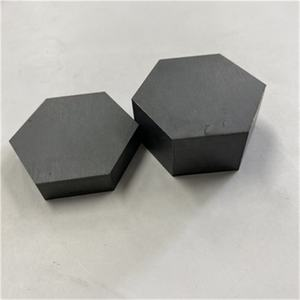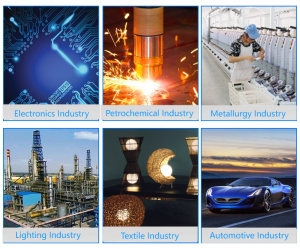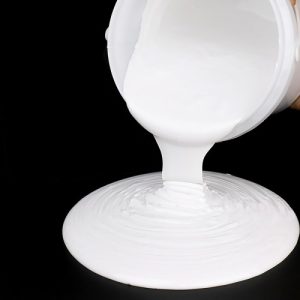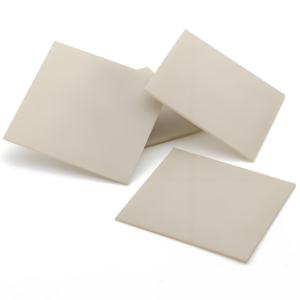Professional industry ceramic supplier, silicon nitride, silicon carbide, aluminum nitride and any other kinds of ceramics.
1. Introduction
In the past 48 hours, industry reports from Ceramic Industry Magazine highlighted a surge in global demand for high-purity silicon carbide components, driven by expansion in semiconductor manufacturing and renewable energy sectors. At the heart of this trend lies the silicon carbide crucible—a critical tool prized for its unmatched thermal stability and chemical resistance.

Silicon carbide crucibles are not just lab curiosities; they’re essential in metal casting, glass production, and high-temperature research. But what makes them stand out among other advanced ceramics? And how do they relate to the growing ecosystem of silicon carbide-based products—from baking dishes to furnace tubes? Let’s break it all down.
2. What Is a Silicon Carbide Crucible?
A silicon carbide crucible is a container made from silicon carbide (SiC), an advanced ceramic known for exceptional hardness, thermal conductivity, and resistance to thermal shock. Unlike traditional clay or graphite crucibles, silicon carbide crucibles can withstand temperatures exceeding 1,600°C without deforming or reacting with molten metals.
These crucibles are typically manufactured through sintering or reaction-bonding processes, resulting in dense, durable structures ideal for repeated heating cycles. Their inert nature makes them perfect for melting non-ferrous metals like aluminum, copper, and zinc—without contaminating the melt.
3. Why Choose Silicon Carbide Over Other Ceramics?
When comparing materials for high-temperature applications, engineers often weigh options like alumina (Al2O3), zirconia (ZrO2), and silicon nitride (Si3N4). While zirconia crucibles offer excellent corrosion resistance, they’re more expensive and less thermally conductive. Alumina crucibles are cost-effective but prone to cracking under rapid temperature changes.
Silicon carbide strikes a rare balance: high thermal conductivity (faster, more uniform heating), mechanical strength, and longevity. In fact, many foundries report 3–5 times longer service life with silicon carbide crucibles compared to conventional alternatives.

Notably, the debate around boron carbide vs silicon carbide often arises in armor and abrasion contexts—but for crucibles, silicon carbide’s superior manufacturability and thermal performance make it the clear winner.
4. Beyond Crucibles: The Expanding World of Silicon Carbide Ceramics
The versatility of silicon carbide extends far beyond crucibles. Today, manufacturers produce a wide array of silicon carbide ceramic products tailored for both industrial and consumer use.
- Industrial applications include silicon carbide ceramic tiles for wear-resistant linings, rbsic silicon carbide tile blocks for kiln furniture, silicon carbide burner nozzles for efficient combustion, and silicon carbide brick for furnace construction.
- High-precision components like silicon carbide ceramic columns, silicon carbide rings, and silicon carbide thermocouple protection tubes ensure reliability in demanding environments.
- Even plumbing benefits: silicon carbide ceramic pipes and silicon carbide ceramic tube insulators handle corrosive fluids and extreme heat in chemical processing.
On the consumer side, you’ll find everything from silicon carbide ceramic baking dishes and casserole dishes with lids to silicon carbide dinner ceramic plates and salad bowls. Brands even offer specialized items like silicon carbide ceramic butter dishes with lids or holiday-themed silicon carbide christmas ceramic platters—combining durability with aesthetic appeal.
5. Silicon Carbide vs. Silicon Nitride: Complementary, Not Competitive

While silicon carbide dominates in thermal conductivity and oxidation resistance, silicon nitride excels in fracture toughness and creep resistance at high temperatures. That’s why some applications—like custom silicon nitride heat shields or silicon nitride crucible factory outputs—favor Si3N4.
Both materials fall under the umbrella of advanced ceramics, and many high-tech facilities use them side by side. For instance, a furnace might employ silicon carbide bricks for walls and silicon nitride plates for support structures requiring impact resistance.
The high purity silicon nitride powder market continues to grow, especially in aerospace and automotive sectors, but it doesn’t replace silicon carbide—it complements it.
6. Practical Considerations and Market Trends
When sourcing a silicon carbide crucible, factors like purity, density, and bonding method (e.g., nitride-bonded vs. reaction-bonded) matter greatly. Reaction-bonded silicon carbide (RBSiC) offers near-net-shape precision and is commonly used for complex parts like rbsic ceramic pillars or silicon carbide ceramic disc taps.
Meanwhile, the consumer market sees rising interest in functional tableware: silicon carbide ceramic oven dishes, pasta bowls, and even handcrafted black plates are gaining traction for their stovetop-to-table versatility and scratch resistance.
Importantly, despite the breadth of products—from silicon carbide grinding discs to silicon carbide ceramic piping—the core advantage remains consistent: performance under pressure, heat, and time.
7. Conclusion
From foundries to fine dining, the silicon carbide crucible exemplifies how advanced ceramics bridge industrial rigor and everyday utility. As demand for energy-efficient, long-lasting materials grows, silicon carbide—and its sibling compounds like silicon nitride—will continue shaping innovations across sectors. Whether you’re melting metal or serving pie, there’s likely a silicon carbide ceramic product engineered just for the job.
Our Website founded on October 17, 2012, is a high-tech enterprise committed to the research and development, production, processing, sales and technical services of ceramic relative materials such as Silicon. Our products includes but not limited to Boron Carbide Ceramic Products, Boron Nitride Ceramic Products, Silicon Carbide Ceramic Products, Silicon Nitride Ceramic Products, Zirconium Dioxide Ceramic Products, etc. If you are interested, please feel free to contact us.






